PIB Headquarters
Transforming India with AI
Over ₹10,300 crore investment & 38,000 GPUs powering inclusive innovation
Posted On:
12 OCT 2025 4:42PM by PIB Delhi
Key Takeaways
- ₹10,300+ crore allocated over five years for IndiaAI Mission with 38,000 GPUs deployed.
- 6 million people are employed in the tech and AI ecosystem.
- Tech sector is projected to cross $280 billion in revenue this year.
- AI could add $1.7 trillion to India’s economy by 2035.
|
Introduction
India stands at the cusp of a new era powered by Artificial Intelligence (AI), where technology is transforming lives and shaping the nation’s progress. AI is no longer limited to research labs or big corporations. It is reaching citizens at every level. From improving healthcare access in remote areas to helping farmers make informed crop decisions, AI is making daily life simpler, smarter, and more connected. It is revolutionising classrooms through personalised learning, making cities cleaner and safer, and enhancing public services through faster, data-driven governance.
Initiatives such as the IndiaAI Mission and the Centres of Excellence for AI are at the heart of this transformation. They are expanding access to computing power, supporting research, and helping startups and institutions create solutions that directly benefit people. India’s approach focuses on making AI open, affordable, and accessible, ensuring that innovation uplifts society as a whole.
What is Artificial Intelligence?
Artificial Intelligence (AI) is the ability of machines to perform tasks that normally require human intelligence. It enables systems to learn from experience, adapt to new situations, and solve complex problems independently. AI uses datasets, algorithms, and large language models to analyse information, recognise patterns, and generate responses. Over time, these systems improve their performance, allowing them to reason, make decisions, and communicate in ways similar to humans.
|
This inclusive vision is also reflected in NITI Aayog’s report, AI for Inclusive Societal Development (October 2025). The report shows how AI can empower India’s 490 million informal workers by expanding access to healthcare, education, skilling, and financial inclusion. It highlights how AI-driven tools can boost productivity and resilience for millions who form the backbone of India’s economy. The report also stresses that technology can bridge deep social and economic divides, ensuring that the benefits of AI reach every citizen.
AI Ecosystem in India at Present
- India’s technology sector is expanding rapidly, with annual revenues projected to cross USD 280 billion this year.
- Over. 6 million people are employed in the tech and AI ecosystem.
- The country hosts 1,800+ Global Capability Centres, including more than 500 focused on AI.
- India has around 1.8 lakh startups, and nearly 89% of new startups launched last year used AI in their products or services.
- On the NASSCOM AI Adoption Index, India scores 2.45 out of 4, showing that 87% of enterprises are actively using AI solutions.
- Leading sectors in AI adoption include industrial and automotive, consumer goods and retail, banking, financial services and insurance, and healthcare. Together they contribute around 60 percent of AI’s total value.
- About 26% of Indian companies have achieved AI maturity at scale, according to a recent BCG survey.
|
As India builds an inclusive AI ecosystem, its growing global recognition reflects this progress. Rankings such as the Stanford AI Index place India among the top four countries in AI skills, capabilities, and policies. The country is also the second-largest contributor to AI projects on GitHub, highlighting the strength of its developer community. With a strong STEM workforce, expanding research ecosystem, and growing digital infrastructure, India is positioning itself to harness AI for economic growth, societal progress, and the long-term vision of Viksit Bharat by 2047.
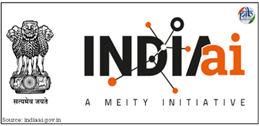
IndiaAI Mission
Guided by the vision of “Making AI in India and Making AI Work for India”, the Cabinet approved the IndiaAI Mission in March 2024, with a budget outlay of ₹10,371.92 crore over five years.[2] The mission marks a defining step towards making India a global leader in Artificial Intelligence.
Since its launch, the mission has made strong progress in expanding the country’s computing infrastructure. From an initial target of 10,000 GPUs, India has now achieved 38,000 GPUs, providing affordable access to world-class AI resources.[3]
What is a GPU?
A GPU or Graphics Processing Unit is a powerful computer chip that helps machines think faster, process images, run AI programs, and handle complex tasks more efficiently than a regular processor.
|
Implemented by IndiaAI, an independent business division under the Ministry of Electronics and Information Technology (MeitY), the mission is building a comprehensive ecosystem that drives innovation, supports startups, strengthens data access, and ensures the responsible use of AI for public good.
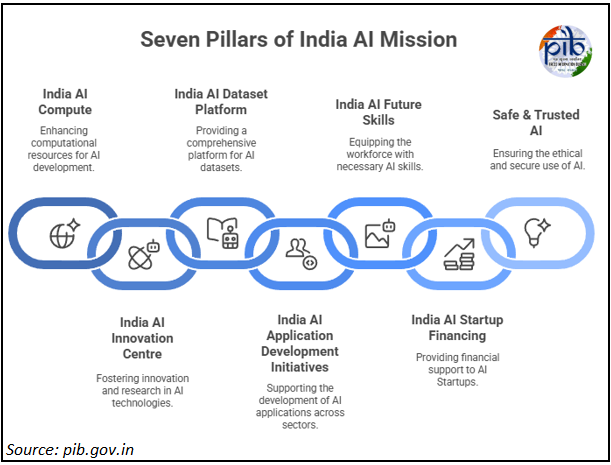
The seven pillars of the IndiaAI Mission are[4]:
1. IndiaAI Compute Pillar
This pillar provides high-end GPUs at affordable costs. As mentioned earlier, over 38,000 GPUs have been on boarded. These GPUs are available at a subsidized rate of just ₹65 per hour.
2. IndiaAI Application Development Initiative
This pillar develops AI applications for India-specific challenges. Sectors include healthcare, agriculture, climate change, governance, and assistive learning technologies. Thirty applications have been approved by July 2025. Sector-specific hackathons are organized with ministries and institutions. For example, the CyberGuard AI Hackathon helps develop AI solutions for cybersecurity.
3. AIKosh (Dataset Platform)
AIKosh develops large datasets for training AI models. It integrates data from government and non-government sources. The platform has over 3,000 datasets and 243 AI models across 20 sectors.[5] These resources help developers focus on AI solutions instead of building basic modules. The platform has over 265,000 visits, 6,000 registered users, and 13,000 downloads by July 2025.
4. IndiaAI Foundation Models
This pillar develops India’s own Large Multimodal Models using Indian data and languages. It ensures sovereign capability and global competitiveness in generative AI. IndiaAI received over 500 proposals. In the first phase, four startups were selected: Sarvam AI, Soket AI, Gnani AI, and Gan AI.
5. IndiaAI FutureSkills
This pillar builds AI-skilled professionals. Support is provided to 500 PhD fellows, 5,000 postgraduates, and 8,000 undergraduates. Over 200 students received fellowships by July 2025. Twenty-six institutes onboarded PhD students. Data and AI Labs are being set up in Tier 2 and Tier 3 cities. Twenty-seven labs have been identified with NIELIT. States and UTs nominated 174 ITIs and polytechnics for labs.
6. IndiaAI Startup Financing
This pillar provides financial support to AI startups. The IndiaAI Startups Global program launched in March 2025. It helps 10 Indian startups expand into the European market in collaboration with Station F and HEC Paris.
7. Safe and Trusted AI
This pillar ensures responsible AI adoption with strong governance. Eight projects were selected in the first round. They focus on machine unlearning, bias mitigation, privacy-preserving ML, explainability, auditing, and governance testing. Over 400 applications were received in the second round. An expression of interest was published on 9 May 2025 for partner institutions to join the IndiaAI Safety Institute.
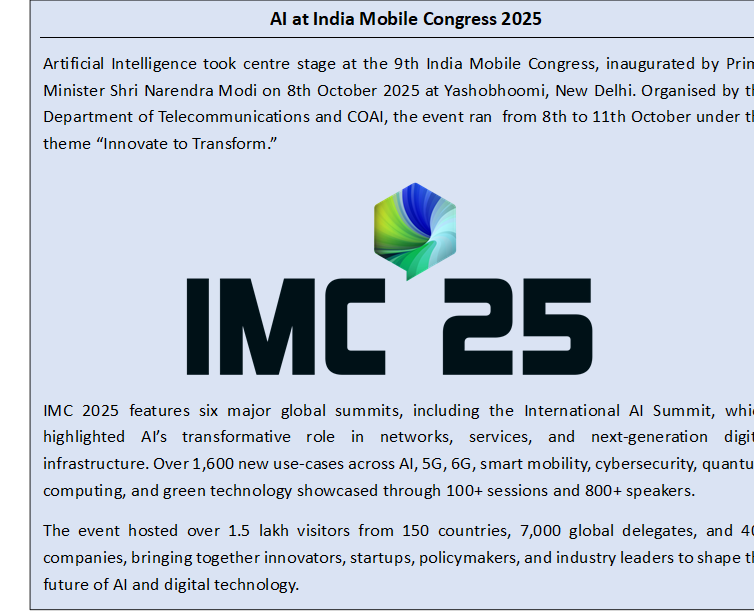
Other Key Government Initiatives and Policy Push
The Government of India is turning its Artificial Intelligence vision into action through a series of transformative initiatives. These efforts are focused on building a robust AI ecosystem, promoting innovation, and ensuring that technology serves every section of society. From creating world-class research hubs to developing homegrown AI models, the government’s approach combines policy, infrastructure, and capacity-building in equal measure.
Centres of Excellence for AI
To encourage research-driven innovation, the government has set up three Centres of Excellence (CoEs) in key sectors such as Healthcare, Agriculture, and Sustainable Cities. A fourth CoE for Education was announced in Budget 2025.[6] These centres are designed to serve as collaborative spaces where academia, industry, and government institutions come together to develop scalable AI solutions. Alongside, five National Centres of Excellence for Skilling have been established to prepare the youth with industry-relevant AI skills, building a future-ready workforce.
AI Competency Framework
This framework provides structured training for government officials, helping them acquire essential AI skills and apply them in policymaking and governance. Designed in line with global benchmarks, it ensures that India’s public sector remains informed, agile, and prepared for the AI-driven future.
IndiaAI Startups Global Acceleration Programme
Launched in partnership with Station F in Paris and HEC Paris, this programme supports ten promising Indian AI startups by giving them access to global expertise, networks, and resources. It aims to help Indian innovators compete at an international level and expand their global footprint.
Sarvam AI: Smarter Aadhaar Services
Sarvam AI, a Bengaluru-based company, is translating advanced AI research into practical governance solutions. In partnership with the Unique Identification Authority of India (UIDAI), it is using generative AI to make Aadhaar services smarter and more secure. In April 2025, Sarvam AI received approval to build India’s Sovereign LLM Ecosystem, an open-source model designed to enhance public service delivery and promote digital trust.
Bhashini: Voice for Digital Inclusion
Bhashini is an AI-powered platform that breaks language barriers by offering translation and speech tools in multiple Indian languages. It helps citizens access digital services easily, even if they are not comfortable reading or writing. In June 2025, the Digital India Bhashini Division and the Centre for Railway Information Systems (CRIS) signed an MoU to deploy multilingual AI solutions across public-facing railway platforms.[7]
Since its launch in July 2022, Bhashini has crossed one million downloads, supports 20 Indian languages, and integrates more than 350 AI models. With 450+ active customers, it continues to promote digital inclusion and bridge linguistic divides.[8]
BharatGen AI: India’s Multilingual AI Model[9]
Launched on 2 June 2025 at the BharatGen Summit, BharatGen AI is the first government-funded, homegrown multimodal large language model. It supports 22 Indian languages and integrates text, speech, and image understanding.
Built using domestic datasets, BharatGen captures India’s cultural diversity and provides a common platform for startups and researchers to create AI solutions tailored to Indian needs.
India AI Impact Summit 2026[10]
India will host the AI Impact Summit in February 2026. The summit will showcase India’s AI capabilities and encourage innovation across sectors. On September 18, 2025, India unveiled the event logo and key flagship initiatives.
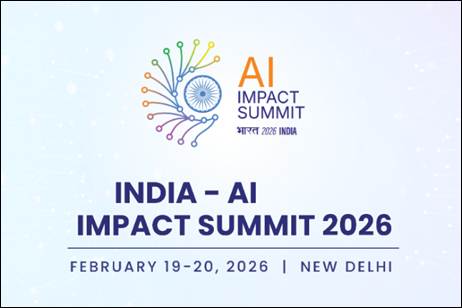
The key flagship initiatives are:
- AI Pitch Fest (UDAAN): A platform for AI startups from around the world with a focus on women leaders and differently-abled changemakers.
- Global innovation challenges for youth, women, and other participants: An initiative to promote AI-driven solutions that address real world public challenges across sectors.
- Research symposium: A gathering to showcase latest AI research and bring together leading researchers from India, the Global South, and the wider international community to present their work, exchange methods, and evidence and encourage collaborations.
- AI Expo: This Expo will focus on Responsible Intelligence and will feature 300+ exhibitors from India and 30+ countries.
The event that unveiled the Summit logo and key flagship initiatives also saw the launch of eight new foundational model initiatives to build indigenous AI models trained on India-specific data. Another major focus was the AI Data Labs, with thirty labs launched pan-India, forming a 570-lab network. The first 27 labs were set up in partnership with the National Institute of Electronics and Information Technology (NIELIT). These labs provide foundational AI and data training under the FutureSkills initiative of the IndiaAI Mission.
The IndiaAI Fellowship Program and Portal was also expanded during the event to support 13,500 scholars. This includes 8,000 undergraduates, 5,000 postgraduates, and 500 PhD researchers across all disciplines. Fellowships are now open to students from fields such as engineering, medicine, law, commerce, business, and liberal arts.
AI in Everyday Life and Work
Artificial Intelligence is driving a new wave of innovation that touches every part of daily life, from healthcare and farming to education, governance, and climate prediction. It helps doctors diagnose diseases faster, assists farmers in making data-driven decisions, improves learning outcomes for students, and makes governance more efficient and transparent.
At the heart of this transformation is the Large Language Model (LLM), an advanced AI system that learns from vast amounts of data to understand and generate human-like text. LLMs are what make chatbots, translation tools, and virtual assistants possible. They make it easier for people to find information, use government services, and learn new skills in their own language.
|
India’s approach to AI goes beyond technology, focusing on inclusion and empowerment. Through national initiatives and global collaborations, AI is being used to solve real-world challenges, enhance public services, and make opportunities more accessible to every citizen. From improving rural healthcare and predicting weather patterns to translating court judgments into regional languages, AI is emerging as a powerful enabler of progress in building a digitally empowered and equitable India.
Some key areas where AI is improving everyday life are:
Healthcare[11]
AI is transforming healthcare delivery. It helps doctors detect diseases early, analyse medical scans, and recommend personalised treatments. Telemedicine platforms powered by AI connect patients in rural areas with specialists in top hospitals, saving time and cost while improving care quality. India’s participation in HealthAI, a global body promoting safe and ethical AI in healthcare, and collaborations between ICMR and IndiaAI with countries like the United Kingdom and Singapore are ensuring responsible innovation and global best practices.
Agriculture[12]
For farmers, AI is a trusted digital companion. It predicts weather, detects pest attacks, and suggests optimal times for irrigation and sowing. The Ministry of Agriculture and Farmers Welfare is using AI through initiatives like Kisan e-Mitra, a virtual assistant that helps farmers access government schemes such as PM Kisan Samman Nidhi.
The National Pest Surveillance System and Crop Health Monitoring combine satellite data, weather inputs, and soil analysis to provide real-time advice that improves yields and income security.
Education and Skilling[13]
AI is being integrated into India’s education system to make learning more inclusive, engaging, and future-ready. Under the National Education Policy (NEP) 2020, the Central Board of Secondary Education (CBSE) offers a 15-hour AI skill module from Class VI and an optional AI subject from Class IX to XII. The DIKSHA digital learning platform by NCERT uses AI tools such as keyword search in videos and read-aloud features to enhance accessibility, especially for visually impaired learners.
In addition, the National e-Governance Division (NeGD) under MeitY, in collaboration with its partners, has implemented YUVAi: Youth for Unnati and Vikas with AI, a national programme aimed at enabling students from Classes 8 to 12 with AI and social skills in an inclusive manner.[14] The programme provides a platform for students to learn and apply AI skills across eight thematic areas: Krishi, Aarogya, Shiksha, Paryavaran, Parivahan, Grameen Vikas, Smart Cities, and Vidhi aur Nyaay, empowering them to develop AI-driven solutions for real-world challenges.
Governance and Justice Delivery[15]
AI is reshaping governance and public service delivery. As per the Supreme Court of India, under e-Courts Project Phase III, modern technologies are being integrated to make the justice system more efficient and accessible. Artificial Intelligence and its subsets such as Machine Learning, Optical Character Recognition, and Natural Language Processing are being used in translation, prediction, administrative efficiency, automated filing, intelligent scheduling, and communication through chatbots.
AI Translation Committees in High Courts are overseeing the translation of Supreme Court and High Court judgments into vernacular languages. Digital legal platforms such as e-HCR and e-ILR now provide citizens online access to judgments in multiple regional languages, making justice delivery more transparent and inclusive.
Weather Forecasting and Climate Services[16]
AI is strengthening India’s ability to predict and respond to natural events. The India Meteorological Department uses AI-based models to forecast rainfall, fog, lightning, and fire. The Advanced Dvorak Technique helps estimate cyclone intensity, while MausamGPT, an upcoming AI chatbot, will offer real-time weather and climate advice to farmers and disaster management agencies.
Will AI Lead to Unemployment?
Artificial Intelligence is often seen as a threat to jobs, but in reality, it is creating new kinds of opportunities. According to NASSCOM’s report “Advancing India’s AI Skills” (August 2024), India’s AI talent base is expected to grow from about 6 to 6.5 lakh professionals to more than 12.5 lakh by 2027, at a compound annual growth rate of 15 percent.
AI is driving demand in areas such as data science, data curation, AI engineering, and analytics. As of August 2025, around 8.65 lakh candidates have enrolled or trained in various emerging technology courses, including 3.20 lakh in AI and Big Data Analytics.
To prepare the workforce for the future, the Ministry of Electronics and Information Technology, MeitY, has launched FutureSkills PRIME, a national programme focused on reskilling and upskilling IT professionals in 10 new and emerging technologies, including AI. As of August 2025, more than 18.56 lakh candidates had signed up on the FutureSkills PRIME portal, and over 3.37 lakh had successfully completed their courses.
|
AI for Inclusive Societal Development
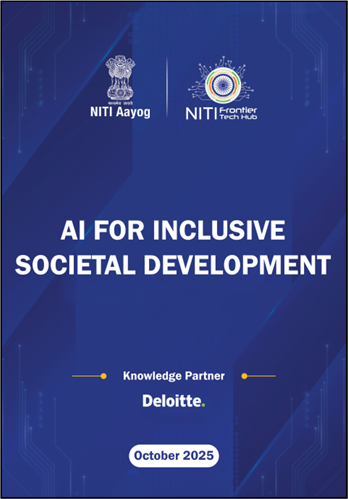
NITI Aayog’s report, AI for Inclusive Societal Development (October 2025), sets a roadmap for using technology to empower India’s informal workforce. It asks a key question: how can the world’s most advanced technologies reach the most overlooked workers so they can overcome constraints and claim their place in India’s growth story?
The report draws on real-life experiences of informal workers. It reflects the challenges and aspirations of a home healthcare aide in Rajkot, a carpenter in Delhi, a farmer, and many others. These stories show persistent barriers, but also the immense potential that thoughtfully deployed technology can unlock. For these millions, technology must not replace their skills, it must amplify them.
The roadmap discusses how Artificial Intelligence, Internet of Things, blockchain, robotics, and immersive learning can remove systemic barriers faced by India’s 490 million informal workers. It envisions a future where, by 2035, voice-first AI interfaces overcome language and literacy barriers. Smart contracts will ensure timely and transparent payments. Micro-credentials and on-demand learning will allow workers to upskill at the pace of their ambition.
At the heart of this vision is the Digital ShramSetu Mission, a national initiative to deploy frontier technologies at scale for India’s informal sector. The mission focuses on persona- or sector-led prioritisation, state-driven implementation, regulatory enablement, and strategic partnerships to ensure affordability and wide adoption. It will mobilise government, industry, and civil society, guided by a robust multi-level impact evaluation framework.
The report emphasises that achieving this inclusive digital leap will require more than optimism. It calls for concerted investments in R&D, targeted skilling programmes, and a strong innovation ecosystem. India’s past successes with digital public infrastructure such as Aadhaar, UPI, and Jan Dhan show that inclusive, at-scale platforms are possible.
Proposed Implementation Roadmap:
Phase 1 (2025–2026): Mission Orientation
Drafting of the mission charter with clear goals, timelines and measurable outcomes. Stakeholders from government, industry, academia and civil society will be engaged to set priorities and define objectives.
Phase 2 (2026–2027): Institutional Setup and Governance Design
Establishment of cross-sectoral governance structures, leadership roles and an implementation blueprint. This phase will also focus on legal, regulatory and digital infrastructure readiness, while promoting domestic innovation and public–private partnerships.
Phase 3 (2027–2029): Pilots and Select Programme Launch
Pilot projects will be rolled out in high-readiness sectors to test solutions in real-world conditions. Accessibility and last-mile adoption will be prioritised, supported by strong monitoring and evaluation frameworks.
Phase 4 (2029 onwards): Nationwide Rollout and Integration
Proven solutions will be scaled across states and cities. Local adaptation will ensure regional relevance and worker mobility across sectors. The phase will aim to institutionalise the mission and sustain its benefits at scale.
By 2035, the mission envisions India as a global leader in inclusive AI deployment. It seeks to ensure that technology not only drives growth but also strengthens livelihoods, opens access to opportunities, and supports the nation’s journey towards an equitable and empowered digital economy.
Conclusion
India’s journey in Artificial Intelligence reflects a clear vision and decisive action. From expanding computing infrastructure to fostering homegrown models and supporting startups, the country is creating a robust AI ecosystem that benefits citizens and drives innovation. Initiatives in agriculture, healthcare, education, and governance demonstrate practical applications with real impact. Strategic initiatives like the IndiaAI Mission, Digital ShramSetu, and foundational model development are ensuring that innovation reaches every citizen while fostering research, skills, and entrepreneurship. These efforts lay a strong foundation for India to emerge as a global AI leader while advancing the vision of Viksit Bharat 2047.
References:
Ministry of Electronics & IT
Ministry of Communications
Department of Science and Technology
Ministry of Agriculture & Farmers Welfare
NITI Ayog
Click here to see pdf
***
VV/SA
(Release ID: 2178092)
Visitor Counter : 10897